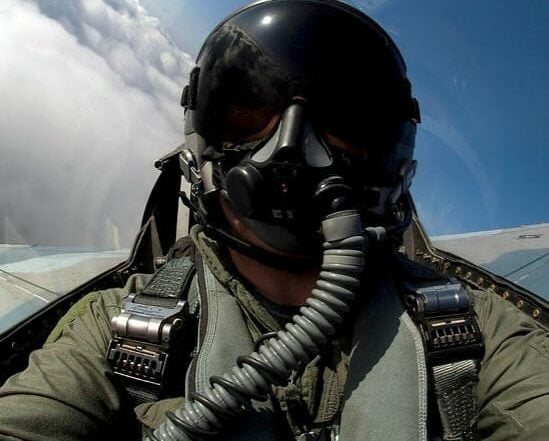Ukrainian F-16 pilot sets record after shooting down record six Russian missiles in one mission – Air Force

Photo: Facebook / Yuriy Ihnat
In December 2024, amid a widespread missile-drone attack, a Ukrainian F-16 fighter jet made history by successfully destroying six cruise missiles in a single combat mission. Two of these missiles were successfully destroyed using the jet's aircraft cannon.
Yuriy Ihnat, head of the communications department of the Air Force Command of Ukraine's armed forces, reported that on Facebook.
The colonel stated that on December 13, the Russian invaders launched a significant air attack, utilizing nearly 200 drones, ballistic missiles, Kinzhal, and 94 cruise missiles from various air, sea, and ground bases.
The primary objective of Ukrainian fighters was undoubtedly cruise missiles, which are the most crucial and challenging targets to intercept. However, Ihnat says Ukrainian pilots have the most extensive experience tackling cruise missiles in the world.
The officer explained that the F-16 pilot, armed with only four air-to-air missiles, destroyed the enemy targets using medium- and short-range weapons. The pilot then had to close to within about two miles to use short-range missiles.
"The guidance system leads me towards enemy targets, a group of eight cruise missiles on a set course. As I get closer, I spot potential obstacles- this means the missiles have their electronic countermeasures, also known as "electronic warfare personal protection equipment." The visual display in the F-16 is very effective; even if the target is affected by electronic interference, it will still be visible on the onboard radar. I flew to an advantageous distance, locked onto the targets once more, and fired the missiles one by one… and both targets were successfully destroyed!
I flew up to the second pair and captured the missiles, noticing they were also equipped with Russian electronic warfare. However, it didn't make a significant difference. The first launch was a success, taking down the designated target. The second launch was just as successful! I couldn't contain my excitement as I witnessed all the enemy missiles being hit. We still had some fuel left in the outboard tanks, so we continued our combat work. The guidance navigator instructed me to go to the duty zone and let my comrade in the Su-27 practice targeting the designated targets," the Ukrainian pilot says.
The pilot followed the command from the control point – he moved to a designated area. But another enemy cruise missile, moving in the direction of the capital, came into his course. The pilot decided to take a risk and use a rapid-fire aircraft cannon.
"I understood that there were few chances to hit a missile flying at a speed of 650 km+," says the pilot; you need to find it in the sky, align it at altitude, and, from a distance of no more than half a kilometer, fire ahead of it. And flying closer is extremely dangerous – in the event of a detonation of a 450 kg warhead, there is a significant risk for the plane, at least flying into a cloud of debris."
This was the first instance where a Ukrainian pilot utilized a cannon against cruise missiles in a combat situation. In the United States, pilots were trained to engage airborne targets with aircraft cannons solely through simulators. Until now, Ukrainian F–16 pilots had never employed a cannon against missiles during an actual flight. However, this time, everything went flawlessly.
"Initially, I searched for a target below but found nothing. So, I increased my altitude, raised the radar, and spotted it. I followed the instructions my instructors in the USA taught me and practiced on the simulator. I fired a few rounds from the gun, which resulted in an explosion…and then another! It seemed like repeated detonations, but after reviewing the objective control, it turned out there were two missiles! They flew in a staggered formation, right next to each other.
The enemy often launches them in such a tactical configuration that a whole group of enemy missiles can fly close to each other so that the enemy sees them as one target. Well, actually, that day, I probably set a record. However, the main thing is the result! I am glad that I have achieved success, and I want to dedicate it to all my comrades who have passed on and were never able to see the F-16 in the Ukrainian sky," the pilot said.
Yuriy Ihnat emphasized that although Ukraine did not receive the latest F-16 modifications, Ukrainian pilots demonstrate high professionalism and readiness to adapt to any conditions.
"Well, we have received some slightly outdated modifications of the F-16s from our allies (as is the case with other ground weapons). Unfortunately, these aircraft are not equipped with strong radars or long-range missiles, so competing with technologically advanced Russian aircraft on our own is a challenge. However, our skilled Ukrainian pilots demonstrate their daily excellence, whether flying a Soviet or an American fighter!
Just imagine what a formidable deterrent force war-hardened Ukrainian pilots will be in the center of Europe when, say, the F-35s enter the service of the Air Force!" Ihnat emphasized.
For reference:
On November 30, Ukrainian F-16 fighter jets shot down seven cruise missiles during the latest massive Russian missile attack on Ukrainian energy.




















































